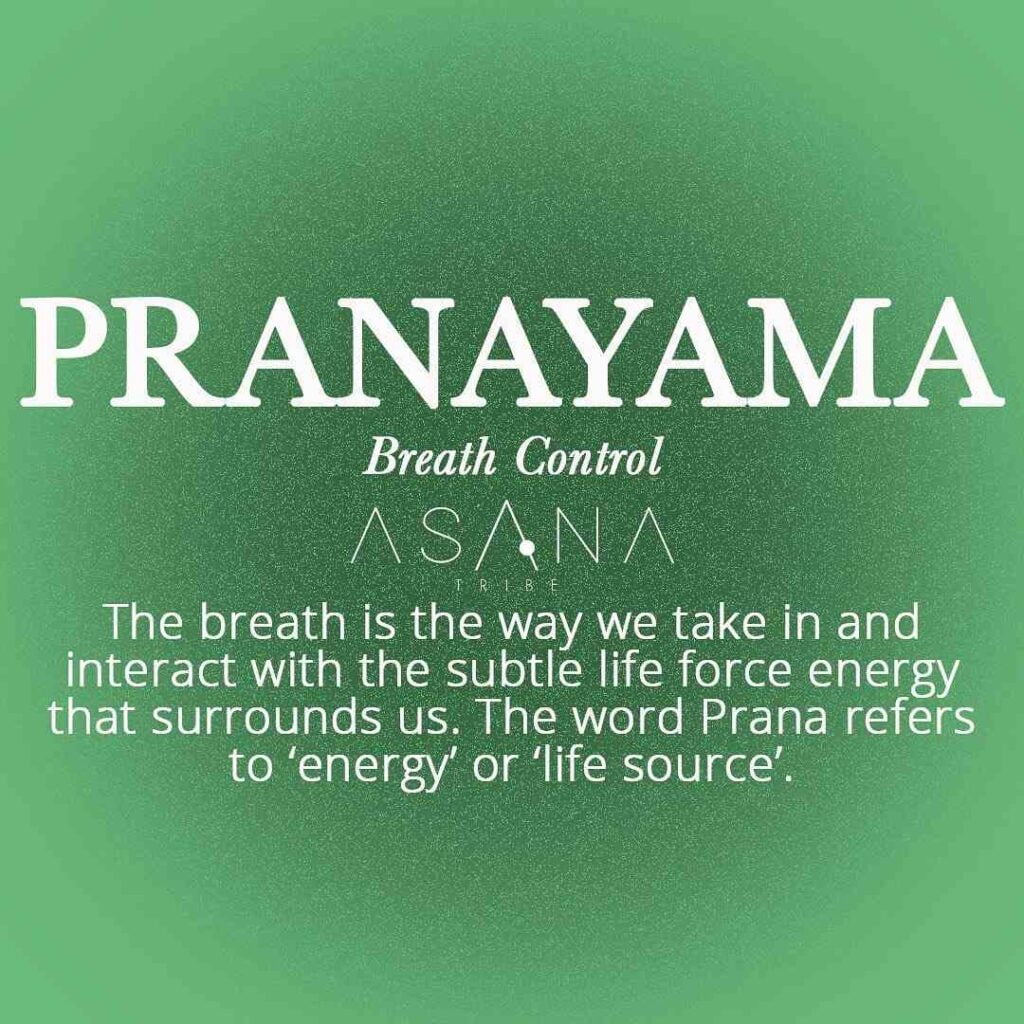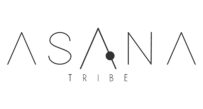The life force. Pranayama is a term encompassing various yogic breath-work techniques. Each technique serves specific purposes, such as Bhramari (humming bee breath), Nadi Shodhana (alternate nostril breathing), and others, promoting relaxation, energy balance, and mental clarity.
These breath-work exercises can have a wide range of physical, mental, and emotional benefits. It’s essential to learn and practice them mindfully, following proper guidance when necessary, to experience their full potential. The choice of which technique to use often depends on your goals and specific needs.
What Does Pranayama Mean?

The word Pranayama is broken up into two parts:
- Prana: Energy source.
- Yama: To control or harness.
Directly translated this 4th limb is breath control and how we can use this energy to calm the nervous system, alleviate stress and anxiety. As well as deepen focus into meditation, movement, and holding or deepening into poses for longer periods of time.
Ekhart yoga shared this beautiful variation of the translation of the word.
“The same word may be differently divided into prana and ayama. Where yama means to ‘restrain’ or ‘control’, ayama means the opposite – i.e. to not do that. Thus in a Pranayama practice, we are not in fact trying to control the prana, but instead to to free it.”
I found this translation resonated so much more. How often do you find that you hold your breath? How often do you unconsciously sigh in a day?
Our breathing patterns are also very closely linked to our emotional states. We breathe in a different way when we are angry, excited, tired or nervous.
“Breathe in deeply to bring your mind home to your body ”
Thich Nhat Hanh
You can learn more about breath with my post on Breathing in Light.
Pranayama Exercises
There many types of Pranayama exercises, here are a few of my favorites:
Yogic Breath (Diaphragmatic Breath or Belly Breathing)
This is the foundational exercise that all beginners should start with. Diaphragmatic breathing involves inhaling deeply into the diaphragm, allowing the abdomen to expand on the inhale and contract on the exhale. It engages the diaphragm muscle fully and promotes relaxation by activating the body’s relaxation response.
A few ways you can do this is laying on your belly and breathing to your naval, alternatively laying on your back your sitting in a comfortable position with your hands on your belly feeling the expansion and contraction of each breath.
Dirga Pranayama (Three-Part Breath/ Triangle Breath)
Here, you are actively breathing into three parts of your abdomen.
The first position is the low belly (on top of or just below the belly button), the second position is the low chest (lower half of the rib cage), and the third position is the low throat (just above the top of the sternum). Inhale from naval to throat, exhale from throat down to naval. In and out through the nose.
Sama Vritti Pranayama (Equal Breath or Box Breathing)
One of the best places to start on your pranayama practice and journey is Sama Vritti or equal breath.
Sama means “equal”, and vritti means “mental fluctuations”, so Sama Vritti Pranayama translates as “equal mental fluctuation breathing”.
So many of us don’t realise how we hold on to the breath, when we are in deep focus, distress to even elation.
Samavritti pranayama is a ratio breathing technique that uses a set length of equal inhalations, exhalations and breath retentions. The main goal of this technique is to reduce mental chatter and distractions.
I’m reminded of this quote by @gurmukh108 when she stated in the documentary On Yoga: Architecture of Peace (if you haven’t seen it I do highly recommend for yogis and photography lovers).
“Quality of breath equals the quality of life”
Sama Vritti (Equal Breath)
Let’s start off with Sama Vritti. Equal breath. There are many options and I will share 3 with you.
You might want to follow the video count I created or go with your own count.
Inhale down to your naval and up to your collarbones (this might be a count of 3 or 4 or even a 5 to 6) slow your exhale to match the same count! Exhale from your collarbones to your naval. No retention (holding the breath in after inhale or exhale)
In and out through your nose
Do this 10 times or more until you feel the balance of your inhale and exhale naturally occur.
Focus on breathing. Focus on counting. Each inhale. Each exhale. 🌬
Drop in the comments how your breath, mind and body feel afterwards
Box Breathing (Square Breathing):
The oh-so-famous box breathing technique. Still part of the Sama Vritti pranayama (equal breath), we now get to add an extra kumbhaka (breath retention or hold) after the exhale. Advanced yogis might like to engage in Bandhas (locks) during their kumbhaka.
You can breathe and count with me:
Inhale 1 2 3 4
Hold 1 2 3 4
Exhale 1 2 3 4
Hold 1 2 3 4
Or you can go with your breath, meet it where is it on any given day and match your inhale, exhale and hold to the same count.
Just like with our physical asana practice each day is different and so is the breath. Meet it with a loving embrace and a gentle kindness. It has been waiting for you
Breathing in, I calm body and mind. Breathing out, I smile. Dwelling in the present moment, I know this is the only moment. – Thich Nhat Hanh
Triangle Breath
As we build on our pranayama practice of Sama Vritti (equal breath) we can now add the Pause, hold, retention, also known as Kumbhaka.
We practice kumbhaka to strengthen our breathing, to stabilize our senses, to increase inner awareness, calm the mind and energize the body. It is important to never hold the breath past the point of discomfort.
You can breathe and count with me:
Inhale 1 2 3 4
Hold 1 2 3 4
Exhale 1 2 3 4
You can also start with your own count, maybe your inhale goes up to 3 or even a 5 and practice to match your hold (retention) and your exhale to the same count.
Nadi Shodhana (Alternate Nostril Breathing)
This yogic breath is balancing, calming, anti-anxiety, and very relaxing. Nadi Shodhana is a yogic practice where you use your fingers to alternately close off one nostril and then the other while breathing. It is believed to balance the body’s energy channels (nadis) and promote mental clarity and balance.
Place the right hand in Vishnu Mudra (forefinger and middle finger bent towards the palm; thumb, ring, and pinkie in the air). To do one round: close off right nostril with the thumb and inhale into the left nostril; close left nostril with ring and pinkie fingers, open the right nostril and exhale through the right, then inhale into the right nostril; close the right nostril, open the left, and exhale through the left nostril. Continue, doing 5-20 rounds.
Bhramari Pranayama (Humming Bee Breath)
The bee breath soothes the nerves and calms the mind.
Inhale through both nostrils, taking a slow deep breath in. Exhale through both nostrils using the throat to make a soft “eeee” sound, like the buzzing of a bee. Do 5-10 rounds, making the buzzing bee noise louder as you progress, but do not strain.
Additional Yoga Breathing Exercises

Here are a few more of my favorite yoga-breathing exercises.
4-7-8 Breathing:
In the 4-7-8 technique, you inhale through the nose for a count of four, hold the breath for a count of seven, and exhale through the mouth for a count of eight. This calming practice can help with anxiety and promote relaxation.
Wim Hof Method:
The Wim Hof Method combines specific breathing patterns with cold exposure and meditation. It involves controlled, deep breaths followed by breath retention. This method is known for its potential to improve energy, focus, and the ability to tolerate cold temperatures.
Holotropic Breathwork:
Developed by Dr. Stanislav Grof, Holotropic Breath-work uses rapid, deep breathing to induce altered states of consciousness. Participants lie down and engage in intense breath-work sessions, often accompanied by evocative music. It is used for self-discovery and therapeutic purposes.
Kapalbhati:
Kapalbhati, a yogic technique, involves forceful exhalations through the nose while keeping the inhalation passive. It is believed to cleanse the respiratory system, increase lung capacity, and improve vitality.
Ujjayi Breath:
Commonly used in yoga, Ujjayi breath is characterized by a soft hissing or ocean-like sound created by constricting the throat during both inhalation and exhalation. It enhances concentration and mindfulness during yoga practice.
Breath of Fire (Kundalini Yoga):
Breath of Fire is a rapid, rhythmic breath practiced in Kundalini Yoga. It involves forceful exhalations through the nose while the diaphragm rapidly pumps in and out. It is used to increase energy, mental clarity, and focus.
Buteyko Breathing:
The Buteyko method aims to reduce over-breathing and increase carbon dioxide levels in the body. It involves slow, shallow breaths through the nose and is used to improve respiratory health and reduce anxiety.

Discovering the Breath
The breath can serve as a powerful anchor in various aspects of life and mastering it can open plenty of doors. It can be a powerful indicator of our internal state and can offer clues about whether something feels right or wrong.


